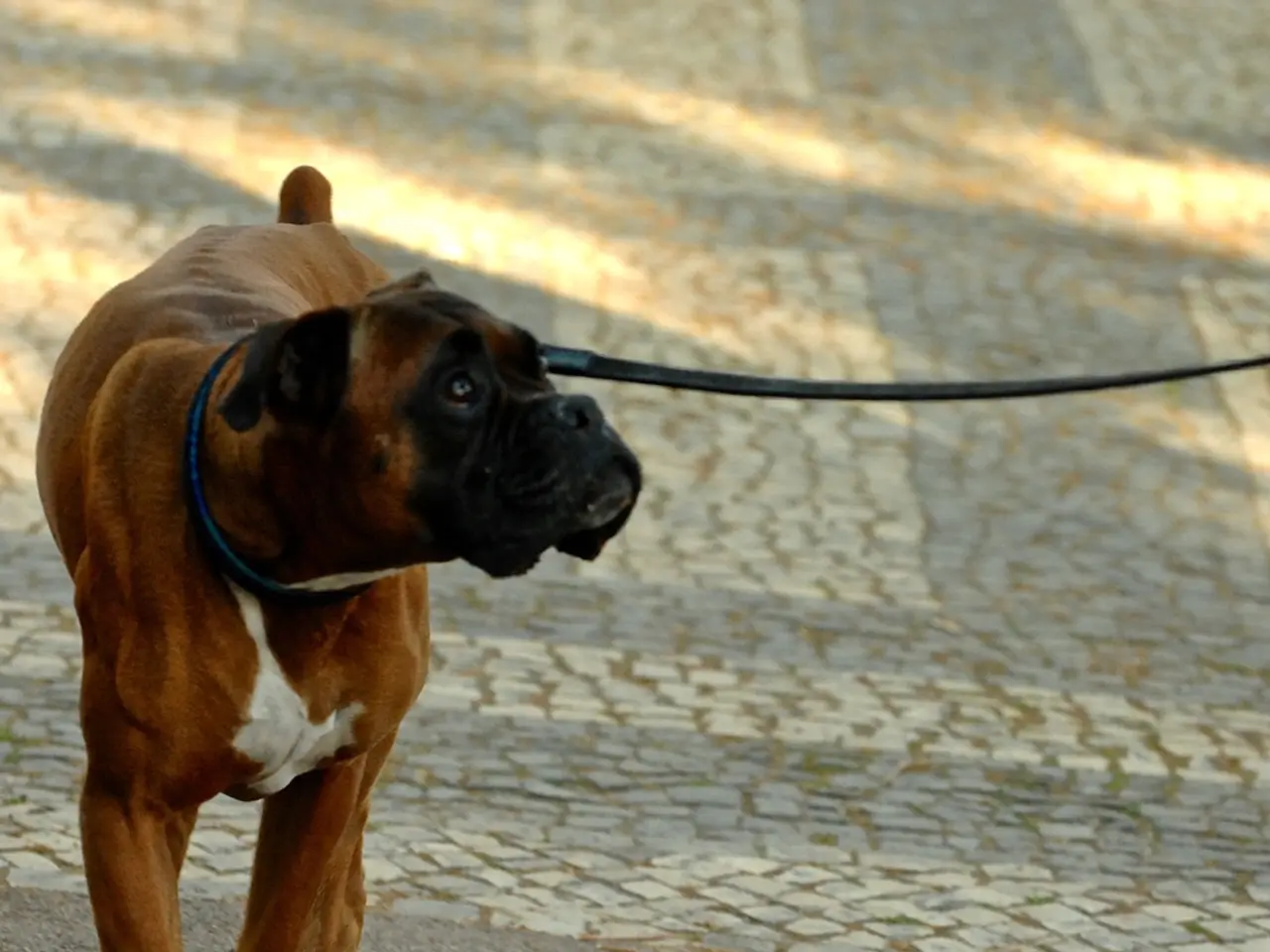What temperature makes walking a dog inadvisable?
In the sweltering heat of summer, it's essential to take extra precautions when walking your dog. Key factors to consider include air temperature, surface temperature, humidity, and your dog's individual characteristics.
Generally, air temperatures of 90°F (32°C) or higher are considered unsafe for walking dogs due to the risk of paw burns from hot surfaces. Pavement and asphalt can reach temperatures much higher than air, potentially causing paw pad burns within seconds. To avoid this, the "seven-second rule" is recommended - if you can’t hold your hand on the pavement for 7 seconds, it’s too hot for paws.
Timing is crucial too. Walk dogs early morning or late evening when surfaces are cooler, and avoid midday or afternoon walks in hot weather.
Breed and physical condition also play a significant role. Brachycephalic breeds, thick-coated dogs, overweight dogs, puppies, seniors, and dogs with heart or respiratory issues are more prone to heat intolerance and overheating.
High humidity can impair a dog's cooling via panting, making them more susceptible to heatstroke, even at lower temperatures than dry conditions.
Walking a dog in hot weather can lead to issues like burnt paws, overheating, and heatstroke, which can be life-threatening. Signs of heatstroke include anxiousness or restlessness, heavy panting, increased heart rate, excessive drooling, dry mucous membranes, bright red gums and tongue, hot to the touch, excessive thirst, lack of coordination, lethargy, vomiting, diarrhea, seizures, rapid heart rate, irregular pulse, pale mucous membranes, white or blue gums, collapse, and comatose.
Preventive measures include walking at cooler times of day, avoiding hot pavements or using alternatives like walking on grass, protecting paws with wax or booties (short durations recommended), keeping dogs well-hydrated and shaded, and monitoring closely for signs of distress.
On days when it's too hot to walk outside, owners can walk their dogs around the house, play with them inside, and provide mental stimulation in the form of dog puzzle toys. For high-energy dogs, owners can consider enrolling them in an indoor doggie daycare to burn off some energy.
Cooling a dog with heatstroke should be done slowly, ideally by applying damp, cool towels to the body and providing small amounts of cool water. Expert vet Dr. Rebecca MacMillan advises against putting a wet towel on a dog, instead recommending the use of cooling mats for dogs.
Remember, the mortality rate of heatstroke in dogs can be as high as 50%, emphasising the importance of prompt vet advice. Certain dogs have a higher risk of overheating, including overweight and obese dogs, brachycephalic breeds like pugs and French Bulldogs, young puppies under six months of age, geriatric dogs, and dogs with underlying health conditions.
Even the best dog breeds for hot weather can become uncomfortable in hot weather. So, let's ensure our furry friends stay safe and cool this summer!
- In certain breeds like pugs and French Bulldogs, the physical condition can make them more prone to heat intolerance and overheating.
- During hot weather, it's essential to take extra precautions when walking dogs to prevent issues such as burnt paws, overheating, and heatstroke.
- On days when it's too hot to walk outside, provides mental stimulation by playing indoors with dog puzzle toys.
- Preventive measures include avoiding hot pavements, using alternatives like walking on grass, and protecting paws with wax or booties (short durations recommended).
- Key factors to consider when walking dogs in hot weather include air temperature, surface temperature, humidity, and the individual dog's characteristics.
- Puppies, seniors, overweight dogs, and dogs with heart or respiratory issues are more prone to heat intolerance and overheating.
- High-energy dogs can burn off energy by enrolling in an indoor doggie daycare, especially on days when it's too hot to walk outside.




